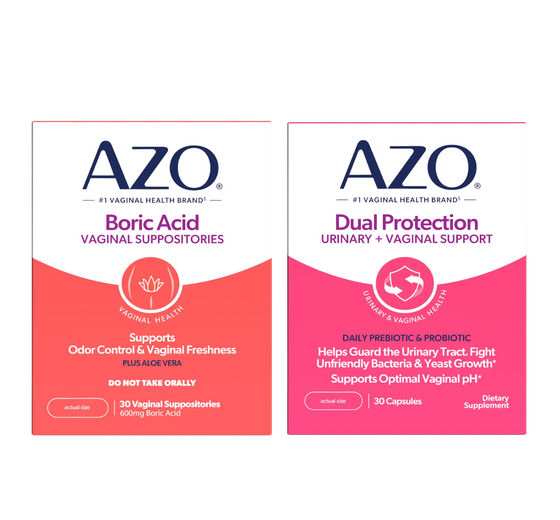
Understanding the distinctions between them is essential for proper care and relief. Dive into this article to unravel the mysteries of UTIs, yeast infections, and BV. We’ll explain their symptoms, causes, and treatments—giving you the knowledge to manage your health.
What is a Urinary Tract Infection (UTI)?
A urinary tract infection (UTI) is an infection in any part of your urinary system, like your kidneys, bladder, ureters, and urethra. Most infections happen in the lower urinary tract—the bladder and urethra.
Common symptoms of UTIs include:
- A strong, persistent need to urinate
- A burning feeling when urinating
- Passing small amounts of urine often
- Cloudy, red, or strong-smelling urine
- Pelvic pain, especially in women
UTIs are usually caused by bacteria entering the urinary tract through the urethra and multiplying in the bladder. Risk factors include being female, sexual activity, certain types of birth control, and menopause. Women have a shorter urethra, making it easier for bacteria to reach the bladder.
Sexual activity increases the chances of bacteria entering the urinary tract. Some birth control methods, like diaphragms and spermicidal agents, can also increase UTI risk. During menopause, lower estrogen levels can weaken the urinary tract, making it more prone to infection.
Treatment for UTIs involves antibiotics prescribed by a healthcare provider. For symptom relief, AZO® products like AZO® Urinary Pain Relief Maximum Strength Tablets, can help ease pain, burning, and urgency.
Understanding Yeast Infections
Yeast infections, or candidiasis, are caused by the overgrowth of Candida, a type of fungus normally present in small amounts in the vagina.
Symptoms include:
- Intense itching and irritation in the vagina and vulva
- A burning feeling, especially during sex or urination
- Redness and swelling of the vulva
- Vaginal pain and soreness
- Thick, white, discharge that looks like cottage cheese
Yeast infections can be triggered by various factors, including antibiotic use, hormonal changes, uncontrolled diabetes, and immune system disorders. When antibiotics disrupt the natural balance of bacteria and yeast in the vagina, it can lead to infections. Hormonal changes, such as those from pregnancy, birth control pills, or hormone therapy, can also alter the vaginal environment. Additionally, high sugar levels associated with uncontrolled diabetes can promote yeast growth. Conditions like HIV or treatments like chemotherapy can weaken the immune system, making it easier for yeast infections to occur.
For relief from yeast infection symptoms, you can try products like AZO® Yeast Plus. AZO® Yeast Plus can help with itching, burning, and unusual discharge or odor**. Always follow the package instructions. While over-the-counter yeast infection treatments are available, it’s best to consult a healthcare provider for persistent or recurring infections.
What is Bacterial Vaginosis (BV)?
Bacterial vaginosis (BV) is a common vaginal infection caused by an imbalance of naturally occurring bacteria. Typical symptoms include:
- Thin, white or gray vaginal discharge
- Strong, fishy vaginal odor, especially after sex
- Vaginal itching
- Burning during urination
Exact BV causes aren’t fully understood, but it is associated with having multiple or new sexual partners, douching, and an imbalance of lactobacilli. Douching disrupts the natural balance of vaginal bacteria, while multiple or new sexual partners can change the vaginal flora. Lactobacilli are beneficial bacteria that help maintain vaginal pH balance.
Treatment for BV requires prescription antibiotics from a healthcare provider. To prevent BV, avoid douching, limit the number of sexual partners, and use condoms to help maintain the balance of vaginal bacteria.
Comparing Symptoms: UTI vs Yeast Infection vs Bacterial Vaginosis
It can be difficult to tell the difference between UTIs, yeast infections, and BV because their symptoms can overlap. However, understanding the specific symptoms of each condition is important for proper diagnosis and treatment. Here is a summary of the key symptoms:
The table below summarizes the key symptoms of UTIs, yeast infections, and bacterial vaginosis:
|
Symptom |
UTI |
Yeast Infection |
Bacterial Vaginosis |
|---|---|---|---|
|
Urinary urgency |
Yes |
No |
No |
|
Burning sensation when urinating |
Yes |
Sometimes (external) |
Yes (external) |
|
Vaginal itching |
No |
Yes |
Sometimes |
|
Discharge |
Cloudy, bloody, or strong-smelling urine |
Thick, white, odor-free discharge |
Thin, white or gray discharge with odor |
|
Vaginal odor |
No |
No |
Yes |
|
Pelvic pain |
Yes |
No |
No |
Knowing when to seek medical advice is important for your health. If you have persistent symptoms despite treatment, severe burning or irritation, or signs of a more serious infection like fever or abdominal pain, you should consult your healthcare provider. Early intervention can prevent more serious complications and ensure effective treatment.
It's important not to self-diagnose these conditions, as untreated or improperly treated infections can lead to more serious health issues. Always seek professional advice for an accurate diagnosis and appropriate treatment.
Prevention Tips for UTI, Yeast Infections, and BV
Preventing these conditions can help keep you healthy.
For a healthy vagina and urinary tract: stay hydrated, urinate after intercourse, and maintain good personal hygiene. For yeast infections, wear breathable cotton underwear, avoid tight-fitting clothing, and keep good blood sugar control if you have diabetes. For BV, avoid douching, limit the number of sexual partners, and use condoms during sex.
A balanced diet and lifestyle can also promote overall urinary and vaginal health. Consulting a healthcare provider for symptoms and conditions is vital to ensure accurate diagnosis and treatment.
Explore AZO® Products Today
AZO® products can help manage UTI symptoms with products designed to provide relief from pain, burning, and urgency. Appropriate treatment for each condition is essential, and AZO® products can be part of your strategy to maintain urinary and vaginal health.*
AZO® Dual Protection Urinary + Vaginal Support Capsules are a unique prebiotic and probiotic blend made specifically to support a healthy feminine microbiome*. AZO® Dual Protection is designed to help restore your bacterial balance to support urinary and vaginal health, starting within 24 hours.*
Additionally, the AZO® UTI & Vaginal pH Test Kit contains two diagnostic tests that can help you determine in minutes if your symptoms may be related to a UTI, vaginal yeast infection, or other vaginal infections. For more information and to learn more about our products, be sure to explore the AZO® product website.**








